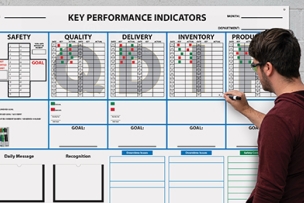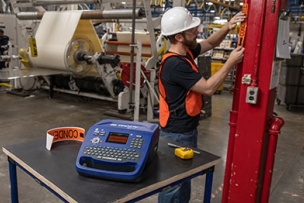The terms matter because harmful substances pose a serious risk to workers on a daily basis.
Exposure to harmful substances or environments led to the deaths of 642 workers in 2019, the highest figure since the series began in 2011, according to the U.S. Bureau of Labor Statistics.
Read more: Is My Respirator Fake? How to Tell if Your N95 Is Real or Counterfeit
Some exposures may cause injuries immediately, while others take their toll over a period of time, with repeated exposures over the course of several years leading to potentially life-changing medical conditions.
The National Institute for Occupational Safety and Health (NIOSH), which is part of the Centers for Disease Control and Prevention (CDC), has published a Pocket Guide to Chemical Hazards, which provides information to workers, employers and occupational health professionals about workplace chemicals and their hazards, including information on exposure limits, the names of toxic compounds and common symptoms associated with chemical exposure.
To understand more about exposure limits, here’s a breakdown of what you need to know about PEL, TLV and REL:
What Does PEL Stand For?
PEL is a legal limit in the United States for an employee’s exposure to a chemical substance or a physical agent. PELs are established by the Occupational Safety and Health Administration (OSHA), and they are based on eight-hour time-weighted averages, so they are permissible exposure limits for a worker to be exposed to a chemical substance or physical agent during a typical eight-hour work shift and standard 40-hour workweek.
PELs also refer to the legal limits on noise exposure in the workplace. OSHA requires employers to implement a hearing conservation program when noise exposure is at or above 85 decibels averaged over eight working hours, or an eight-hour time-weighted average.
PELs for chemical substances or physical agents are published in 29CFR 1910.1000 and in the corresponding three tables—Z-1, Z-2 and Z-3. Table Z-1 refers to limits for air contaminants, Table Z-2 refers to limits for substances with ceiling values, and Table Z-3 refers to mineral dusts. Knowing which contaminant you are dealing with and “how, when, why and where it is being used” is important to determine which table is applicable, according to the National Safety Council’s Safety+Health magazine.
What Is the TLV?
The TLV is set by the American Conference of Governmental Industrial Hygienists (ACGIH), a charitable scientific organization that advances occupational and environmental health. It is a chemical substance limit that a worker can be exposed to each day without suffering negative health effects.
TLVs are “estimates based on the known toxicity of a chemical substance in humans or animals given the currently available analytical and technological resources,” according to Safety+Health magazine.
To determine TLVs, ACGIH uses committees to review various published literature in disciplines such as industrial hygiene, toxicology and occupational medicine, the report adds. TLVs “are then developed as recommendations or guidelines and are intended to be interpreted and used by a person trained in the discipline of industrial hygiene.”
While the definition of a TLV may sound similar to that of a PEL, the latter is a legal limit enforced by OSHA, while a TLV is a recommendation from a scientific organization.
As Safety+Health magazine notes: “Although ACGIH is a well-known and respected scientific organization that contributes to the PELs set by OSHA, its TLVs are not legal limits.”
What About RELs?
The NIOSH’s REL is not a regulatory requirement. It is a recommended guideline for upper exposure limits to hazardous substances that NIOSH recommends to OSHA as safe limits for worker health.
Because OSHA’s legally enforceable PELs only cover a certain amount of chemicals, employers who use chemical substances that do not have PEL attached to them can use RELs (or another recognized limit such as TLV) to be sure that they are meeting their general duty to protect employees.
RELs can be found in the NIOSH Pocket Guide to Chemical Hazards, which provides employees with a reference for understanding safe exposure limits.
Read more: Best Practices for Managing Chemical Safety
How Do I Keep Workers Safe?
Understanding how PELs, TLVs and RELs work together can give you a clearer picture of the exposure threat your workers may face and steps you can take to protect those workers.
But what practical steps can employers take to keep workers safe from harmful substances?
As Safety+Health magazine notes, whenever possible, administrative controls are the best way to limit the possibility of harm. This means “establishing exposure times for any worker entering a hazardous environment, or applying engineering controls to help provide the safest environment possible.”
Steps employers can take include using ventilation methods, “enclosure of the source of emissions,” and “modifications to processes and equipment” to reduce emissions and keep the exposure of employees to air contaminants within prescribed limits. They may also consider using chemicals that are less hazardous to their workers.
When administrative controls cannot be achieved, the proper use of personal protective equipment (PPE) is advised.
“Any equipment and/or technical measures used for this purpose must be approved for each use by a competent industrial hygienist or other technically qualified person,” the report adds, noting that respirators must comply with OSHA’s 1910.134 standard.
Read more: PPE Selection: Find the Right Type of Respirator
How are you making sure your employees are safe from harmful substances in the workplace? Share your thoughts in the comments below.





Talk to Us!
Leave a reply
Your email address will not be published. Required fields are marked *